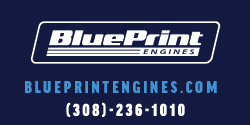celticwarlock
Active Member
After a road trip this weekend, I discovered that the rear main seal in my 440 has really begun to bleed, and I think it's finally time to pull the motor out and replace all the soft parts (and some metal ones, too). It's been weeping for years, but now it's beyond the point where I can live with it.
My car is a '69 New Yorker, and the motor is original. It's never been apart, and it has just 58,000 miles on it. It does not burn oil, make noise, or do anything unusual. It runs rather well, in fact, aside from this worsening leak. I have a plan for what I'd like to do while it's out, and I'd like some opinions.
I plan to tear it down to a short block, replace all the seals and gaskets, have the heads machined for hardened seats, replace the seals, and the valve springs as well. I will be replacing the timing gears and chain, and the cam along with them. I'll probably replace the oil pump also. Everything else will remain in place unless careful inspection warrants additional surgery.
I've got a few questions:
- I intend to use a rope seal, as I've heard that using anything else on a knurled crank can be very problematic. Is this a wise decision? I mean, this one lasted decades, so....I don't see what the disadvantage would be.
- Is there any reason I shouldn't use new steel head gaskets like the ones the motor originally came with?
- I'd like to install a Mopar Performance Purple Shaft. Considering how low the mileage is, would it be necessary to replace the cam bearings? Also, what sort of cam would be best for a cruiser with a bit of grunt? I seem to remember Stan suggesting one cam in particular in a post where he was referencing the 4-speed Formal he put together years ago. I forget what the numbers were, but it seemed perfect for what I have in mind.
I will also be performing a few suspension upgrades along the way as well as some work on the steering box, but my main concern is this 440 of mine (the trans was rebuilt a few years back due to a leak behind the pump and the rear is fine, in case anyone is wondering). Thanks in advance for your input.
My car is a '69 New Yorker, and the motor is original. It's never been apart, and it has just 58,000 miles on it. It does not burn oil, make noise, or do anything unusual. It runs rather well, in fact, aside from this worsening leak. I have a plan for what I'd like to do while it's out, and I'd like some opinions.
I plan to tear it down to a short block, replace all the seals and gaskets, have the heads machined for hardened seats, replace the seals, and the valve springs as well. I will be replacing the timing gears and chain, and the cam along with them. I'll probably replace the oil pump also. Everything else will remain in place unless careful inspection warrants additional surgery.
I've got a few questions:
- I intend to use a rope seal, as I've heard that using anything else on a knurled crank can be very problematic. Is this a wise decision? I mean, this one lasted decades, so....I don't see what the disadvantage would be.
- Is there any reason I shouldn't use new steel head gaskets like the ones the motor originally came with?
- I'd like to install a Mopar Performance Purple Shaft. Considering how low the mileage is, would it be necessary to replace the cam bearings? Also, what sort of cam would be best for a cruiser with a bit of grunt? I seem to remember Stan suggesting one cam in particular in a post where he was referencing the 4-speed Formal he put together years ago. I forget what the numbers were, but it seemed perfect for what I have in mind.
I will also be performing a few suspension upgrades along the way as well as some work on the steering box, but my main concern is this 440 of mine (the trans was rebuilt a few years back due to a leak behind the pump and the rear is fine, in case anyone is wondering). Thanks in advance for your input.

















